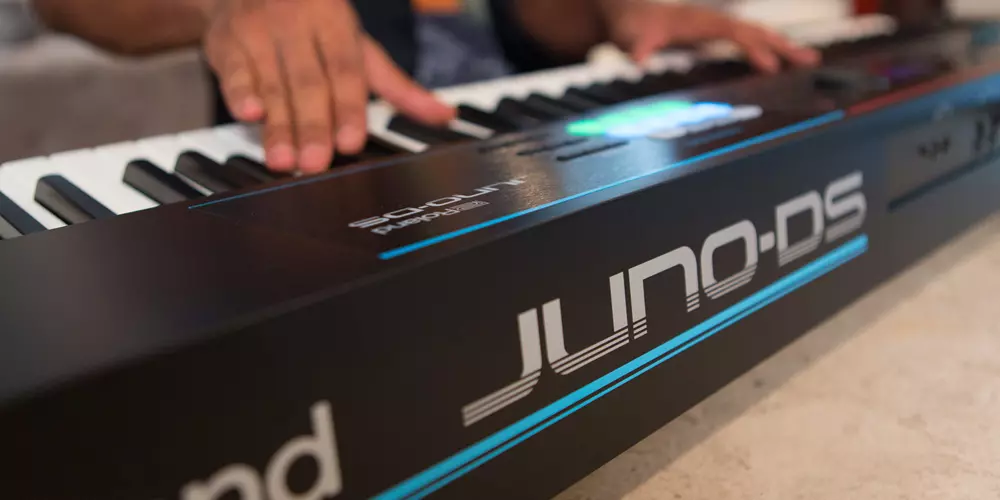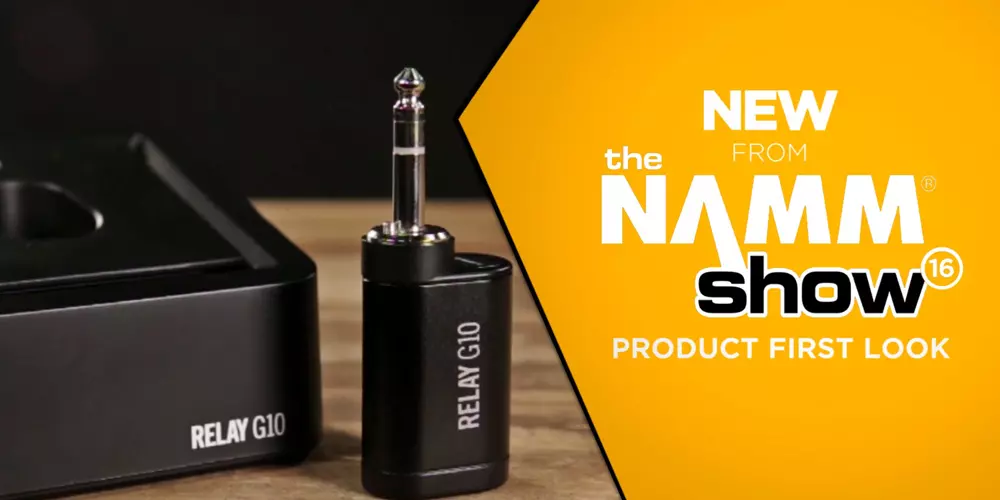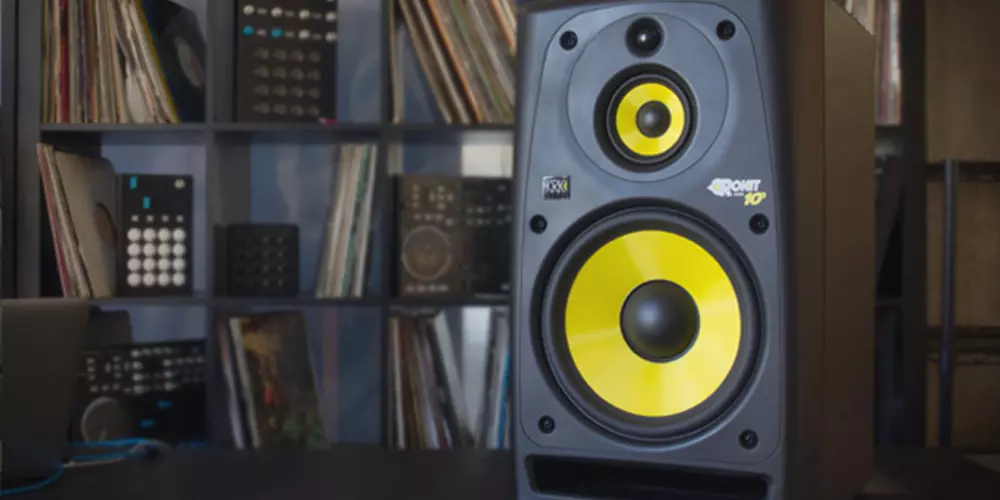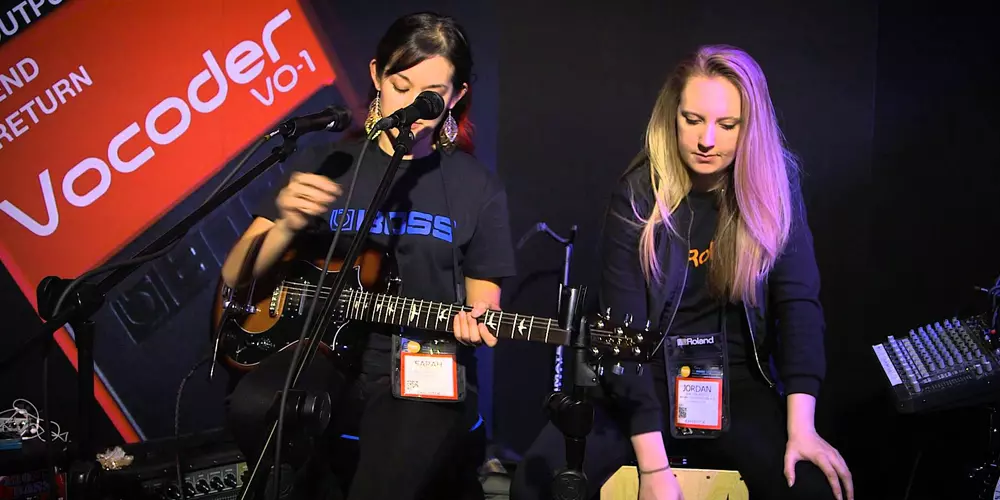NAMM 2016: Roland - New Analog and Digital Synths

Roland Juno-DS Synthesizers
TEXT OF VIDEO:
Hi, my name is Ed Diaz from Roland US, and I'm proud to present the brand new Juno-DS synthesizer here. Now the synthesizer here we have ... The Juno we have a 61 note, and an 88 note. The weight on the 61 is 12 pounds, the weight on the 88 is 35 pounds, so that's something great for my guys that are out there gigging. It's not going to break their back. Very light. Very easy to run around. Also for running around these both can use batteries. The battery life on these, using AA batteries, is anywhere from five to six hours. That's something that's great as well.
Now as far as sounds the JUNO-DS' come with over 1200 sounds. 1200 of our classic Roland sounds in here. Let's take for example, the first one is the Grand Piano DS, which was made specifically for the JUNO-DS. Let's take a listen now … that's made specific for the JUNO-DS, and some classic sounds … some great sounds in here. Now let's check out another sound real fast. I really like this brass sound. A lot of great sounds.
Now 1200 sounds plus you can download additional libraries. You can save those to USB, and then bring 'em in. We have one virtual expansion board slot in here. Let me share this other brass that sounds great. A lot of great sounds in here, and here we go. There it is, Breakout brass. It's called Breakout brass, so it has a really nice vibe for my people that are out there playing gigs. Now we do also have the ability in the JUNO-DS to split, and layer sounds up to 16 different ways. If you're playing live, and you want to have different sounds in different zones of the keyboard, maybe layer or split, you can totally do that.
Now another great feature of the JUNO-DS is we have an eight part, eight measure pattern sequencer in here. If I want to do a quick pattern sequence, I maybe come into here, and I create a user, and I can go ahead and use the sounds inside, or I can take sample import, and I have ... I can bring in 16-bit audio WAV house as a sample. I'm going to do a quick sequence using a sample as my drums … let's go ahead, and record something …
… that was just a little taste of the pattern sequencer. Now if you wanted to go ahead and hook up the JUNO-DS to the computer it's very easy. We have a USB audio and MIDI right here, so just go out of here into your computer, and you can use your favourite digital audio software. That's 16 parts in the JUNO-DS. Once you have it hooked up to your DAW, you have a DAW controller, and so you can control, start and stop, and other aspects of your DAW.
That is in a nutshell the JUNO-DS from Roland. Thank you for watching.
Roland Boutique Synths
TEXT OF VIDEO:
I am Duane McDonald. I'm product manager for keyboards and synths here at Roland, U.S. NS I'm happy to show you our Roland Boutique line of synthesizers. We've got a new series of boutique products that we use in our Roland ACB [analog component behaviour] technology.
We've modelled down to the component level and how things interact with each other some classic Roland synths, starting with the JX-03, which is a replication of our JX-3P synthesizer, including the PG-100 programmer. Our Juno-106 here in the JU-06 Roland Boutique model. JP-08, we've modelled the Roland Jupiter-8 keyboard as well.
Now these modules are available independently. The are positionable. We have this one locked in here. You can run them in this optional K-25m keyboard or use themselves and control them from a MIDI keyboard. You can hear the ACB technology, I'll give you a little sound example here. Here is the Jupiter, the JP-08. Little Juno, which is our very famous base synthesizer, very familiar tones, if you own the original Juno-106. Here is the JX-3P.
Everything that was on the front panel of Jupiter-8, we've got here in the boutique module same with the Juno-106. On the JX-03, we've got everything that was included in the optional programmer. It makes it very easy to have some fun programming sounds. Quickly dial in the sounds you want and take this with you.
They run on batteries or through ... we've then powered through USB as well. It's very convenient, very portable, and really just a ton of fun. That's the Roland Boutique line.
Roland A-01 MIDI/CV Controller and Generator
TEXT OF VIDEO:
Hey, this is Peter from Roland Corporation here with Long & McQuade, here to talk about the A-O1.
The A-O1 is a midi and CV sequencer and interface. It has a 16-step sequencer. It has CV capabilities, so you could output into older CV oriented pieces of gear. It also has an eight bit synthesizer engine built into it, an eight bit digital synthesizer engine. Right now, it's sold with the keyboard, but it also functions as a module. If you just want to use it with a larger keyboard, you're able to do that.
I can actually go in and check out the synthesizer engine. It's eight bit, it has three different wave forms and noise wave form. If I play a little bit and go to the filter window here, I have three different types of filters. Cut off, resonance, all the basic synthesizer tools that you would need to make your own sound. It's a nice contrast to the rest of the boutique line, because the boutique line is meant to emulate vintage analog gear. This is not trying to be analog. It's eight bit digital, kind of nostalgic for that Commodore, Chip Tune style sound. It's really, really handy for that.
As far as the pattern sequencer goes, you can actually change the mode and go into a 16 step sequencer where you can play, mute steps, change the scale, use the encoders to adjust shuffle, step order and tempo amounts. It's very, very handy for live and studio use. It also has Bluetooth over MIDI so if you have a tablet that has midi capability, you can use it with that.
That's the A-O1, guys. Please visit Roland.ca for more information. Thanks.






